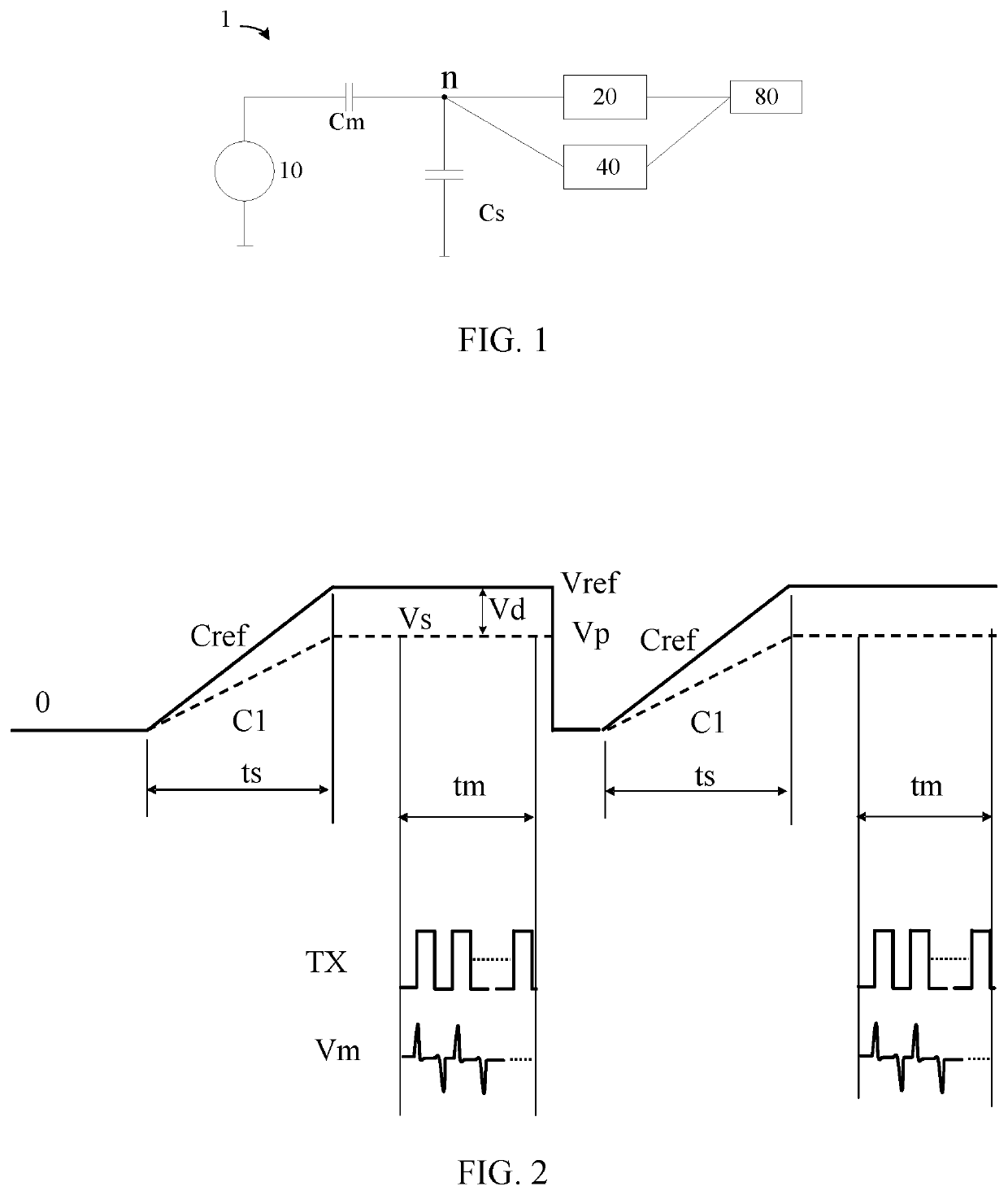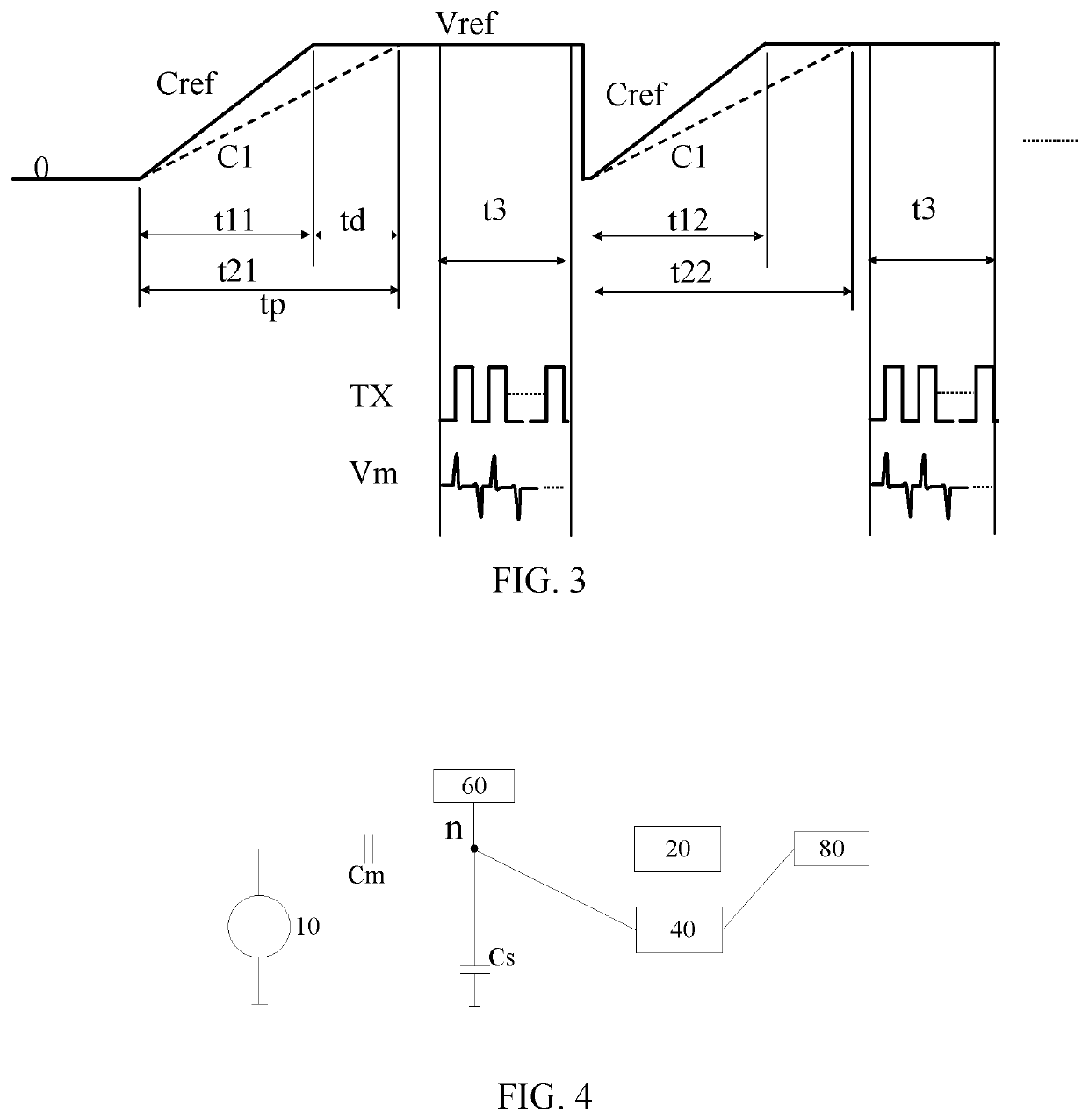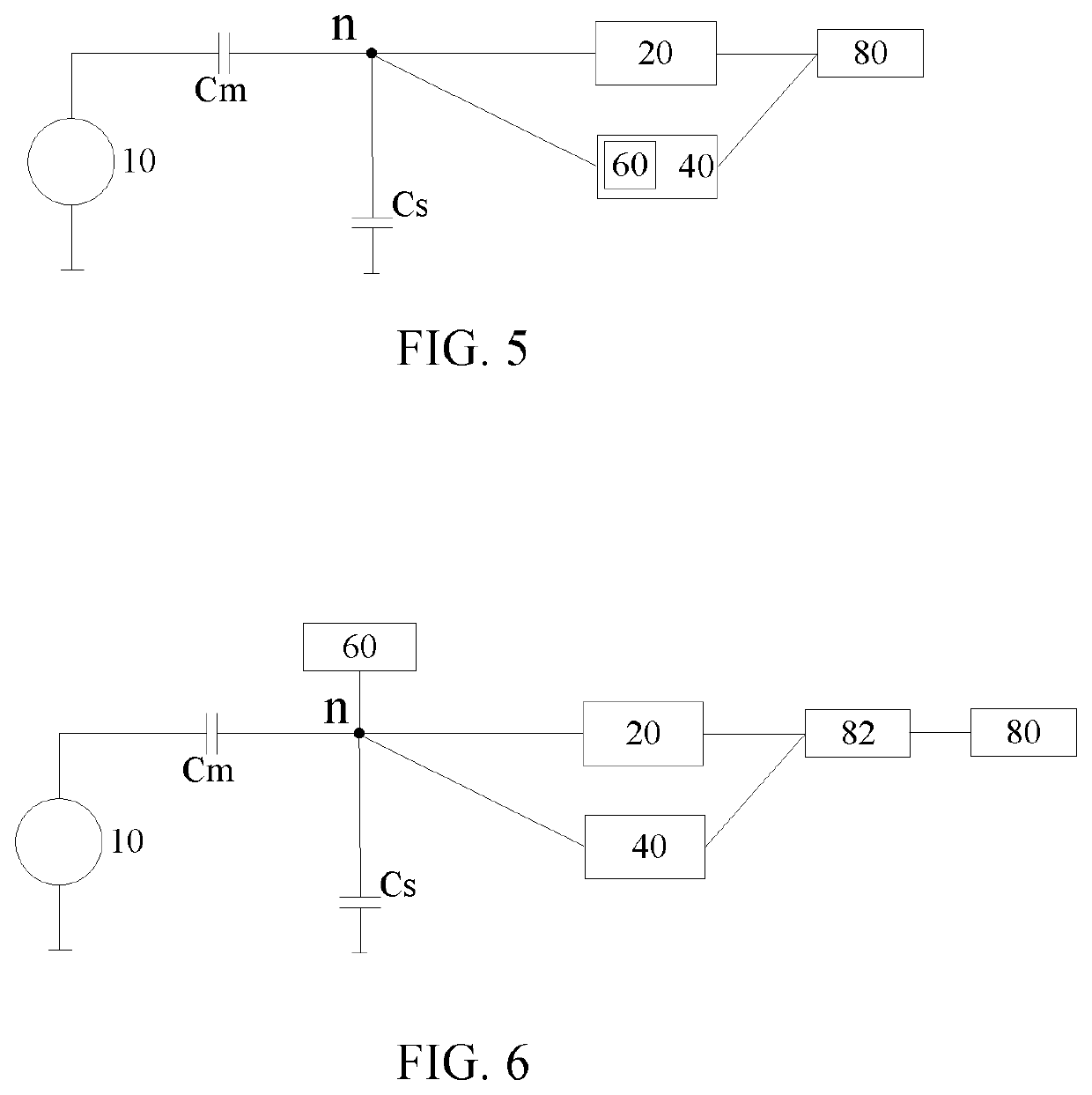Touch sensor circuit and touch sensor method
a touch sensor and touch sensor technology, applied in the field of touch sensing, can solve the problems of inability to implement multi-touch sensing, easy to affect multi-capacitive touch sensing, wrong or inaccurate detection, etc., to achieve shorten the duration of touch sensing, enhance multi-capacitive sensing accuracy, and reduce environmental affection
- Summary
- Abstract
- Description
- Claims
- Application Information
AI Technical Summary
Benefits of technology
Problems solved by technology
Method used
Image
Examples
first embodiment
[0020]Please refer to FIG. 3 which illustrates a second kind of time sequence of the The difference of the second kind of time sequence from the first kind of time sequence is what is measured in the second kind of time sequence is the time tp required for the first capacitor Cs charge to the level as reference voltage Vref. Then comparing time tp with time t11 for a reference capacitor charge to the level as reference voltage Vref to determine whether touch is happened on the point corresponding to the first capacitor Cs or not. When the voltage of node n reaches a work voltage of the mutual-capacitive sensor circuit, the mutual-capacitive touch detection is performed.
[0021]The detail steps in the second kind of time sequence of the first embodiment of the present disclosure are as follows. Charge the node n between the mutual-capacitive sensor circuit 20 and the self-capacitive sensor circuit 40. Detecting duration of time t21 which represents time required for charging voltage o...
second embodiment
[0025]It should be noticed that the charging unit 60 can be isolated from touch sensor circuit as shown in FIG. 4 which illustrates the
third embodiment
[0026]FIG. 5 illustrates the present disclosure. As shown in FIG. 5, the charging unit 60 can also be disposed in the mutual-capacitive sensor circuit 40. Thus, additional space for disposing isolated the charging unit 60 can be saved.
[0027]In the second the third embodiments, the charge unit can independently charge the mutual-capacitive sensor circuit 20 so that the implement of the mutual-capacitive sensor circuit 20 will not be affected by the voltage of the first capacitor Cs in the self-capacitive sensor circuit 40. As a result, even the voltage Vs in period is becomes lower due to touch happens on the first capacitor Cs, the mutual-capacitive sensor circuit 20 still work normally because the voltage of node n will be charged to work voltage by the charging unit 60.
[0028]Please refer to FIG. 6 which illustrates the fourth embodiment of the present disclosure. A touch sensor circuit 1 of the fourth embodiment includes a driving circuit 10, a mutual-capacitive sensor circuit 20,...
PUM
 Login to View More
Login to View More Abstract
Description
Claims
Application Information
 Login to View More
Login to View More - R&D
- Intellectual Property
- Life Sciences
- Materials
- Tech Scout
- Unparalleled Data Quality
- Higher Quality Content
- 60% Fewer Hallucinations
Browse by: Latest US Patents, China's latest patents, Technical Efficacy Thesaurus, Application Domain, Technology Topic, Popular Technical Reports.
© 2025 PatSnap. All rights reserved.Legal|Privacy policy|Modern Slavery Act Transparency Statement|Sitemap|About US| Contact US: help@patsnap.com



